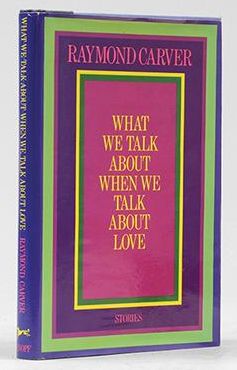Bibliophilia rejoice when the Academy Award winner chosen is a film adaptation of a favorite book. It is a very special year when the film that got the Best Picture award is due to receive an extra bonus of publicity and a boost in readership. 2014 is about to become a manifestation of that through the Oscar winning American black comedy-drama, Birdman or (The Unexpected Virtue of Ignorance), co-written, co-produced, and directed by Alejandro González Iñárritu.
Birdman’s story is not based on a book, but, it has a short story from a book in the center of its plot. The film is about a washed-up Hollywood actor, Riggan Thomson (played byMichael Keaton), who was famous for playing the superhero Birdman in blockbuster movies decades earlier. Riggan hopes to reinvent his career by writing, directing, and starring in a Broadway adaptation of Raymond Carver’s short story What We Talk about When We Talk about Love. This short story from Carver’s third collection of stories was published by Knopf in 1981 under the same title.
The level of attention Raymond Carver’s works, and specifically, What We Talk about When We Talk about Love, will receive from book collectors depends on a number of factors. The visual exposure that the Oscars generate and all the added publicity, does not necessarily translate into increased collectability and ultimately scarcity. There is always a good chance that other collector interests, such as Hollywood memorabilia collectors and so forth, will view a first edition of the short stories as a collector’s item. That may or may not amount to a significant increase in demand.
Historically, books and films have held a close relationship. Listed below are the ten most recent best picture winners that were produced through film adaptation, along with their scarcity rank before and after the award.
Without a doubt, the age, imprint, and book and author importance are the major factors behind scarcity. J.J.R Tolkien’s The Lord of the Rings: The Return of the King is a good example of the effect these factors have on scarcity and of course the value of rare first editions. The older books that are already short on supply tend to get the extra boost from the film adaptation that turns them into a hot commodity, as demonstrated by Twelve / 12 years a Slave, The Lord of the Rings: The Return of the King and Chicago. The author’s importance as demonstrated in the case of J.R.R. Tolkien is also a big factor, pushing his trilogy well into five figures. On the surface, short story adaptations from collections by the same author seem to be less collectible than full novel productions. That should come as no surprise since the literary content is partially used, unless of course, the author’s importance becomes the main attraction to the rest of the works.
American short story writer and poet, Raymond Carver, is an important author that contributed to the revitalization of the American short story in literature during the 1980s. Critics argue that his short active writing career lasted less than 10 years due to the adverse effects of alcoholism prior to 1977, and an early death at the age of 50. His third collection of stories – What We Talk about When We Talk about Love, was published just prior to the peak of his popularity, and became the first of his books to go into multiple printings. Soon after the book’s release, Carver was disturbed by a reviewer’s compliment, which called him a “minimalist” writer. Carver reacted with: “There’s something about “minimalist” that smacks of smallness of vision and execution that I don’t like.” He should now be happy to know that there is no minimalism in the Oscar for Best Picture on the Big Screen.



{ 0 comments… add one now }